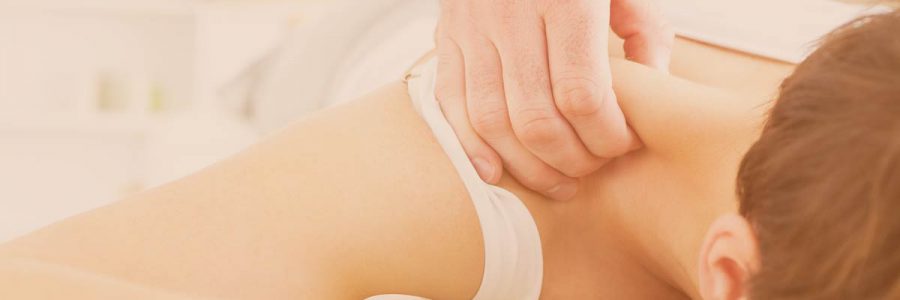
If you’re considering going to school to become a massage therapist, you may be as excited as you are worried. Whether massage therapy would be your first experience in a full-time job or a career change after already being in the workplace, going to school for a new skill and profession can be daunting.
But it doesn’t have to be! With a little information on your side, you can feel comfortable and even enthusiastic as you embark on this new adventure. Here are three tips on how to succeed in massage therapy school—and to be happy while doing so.
- Commit to the goal of graduation. Before you even sign up for your first class or attend your first lecture, you should decide that this is what you want to do. After that decision has been made, you will find the energy and focus that it takes to accomplish your goal. It’s just like your parents (or grandparents) always told you: “Where there’s a will, there’s a way.” If you want to achieve the goal of becoming a licensed massage therapist and actually believe that you can do it, then you will, whether it takes six months, a year, or more.
- Find a study partner or group. In massage therapy school, you’ll likely be learning about the human body in more detail than you ever have before. And when it comes to memorizing huge lists of terms in anatomy or studying a bunch of new vocabulary, having a study partner makes all the difference. Even if you think you study better alone, it’s still wise to find a fellow student or two and exchange contact information. You never know when a copy of someone else’s notes will come in handy or when you’ll need help with an assignment. Plus, when you’re in massage therapy school, it’s always nice to have a buddy to give your shoulders a nice rub when you’re feeling stressed!
- Take time for self-care. Just like an airline flight attendant will tell you to secure your own oxygen mask before helping anyone else, you’ve got to take care of your own body and mind before you’ll be able to help anyone else through a career in massage therapy. This applies to your time in massage therapy school as well; you won’t be able to fully apply yourself and focus on your coursework if you haven’t taken care of yourself first. This self-care might come in the form of meditation, scheduled time off from schoolwork, time to prepare a healthy meal, or alone time to just decompress and watch a favorite show. Whatever it is, set aside the time to do it and honor that commitment to yourself.
If you can mentally commit to massage therapy school, find a support group in your classes, and make time to take care of yourself while you do it, you’ll be prepared to succeed not only in school but in your career in massage therapy as well. And as you undertake this new journey into massage therapy school and beyond, you can feel confident that your career choice will help other people as much as it helps you.
Click here for more information about attending Seattle Massage School
Taking Your Massage Therapy Career on the Road
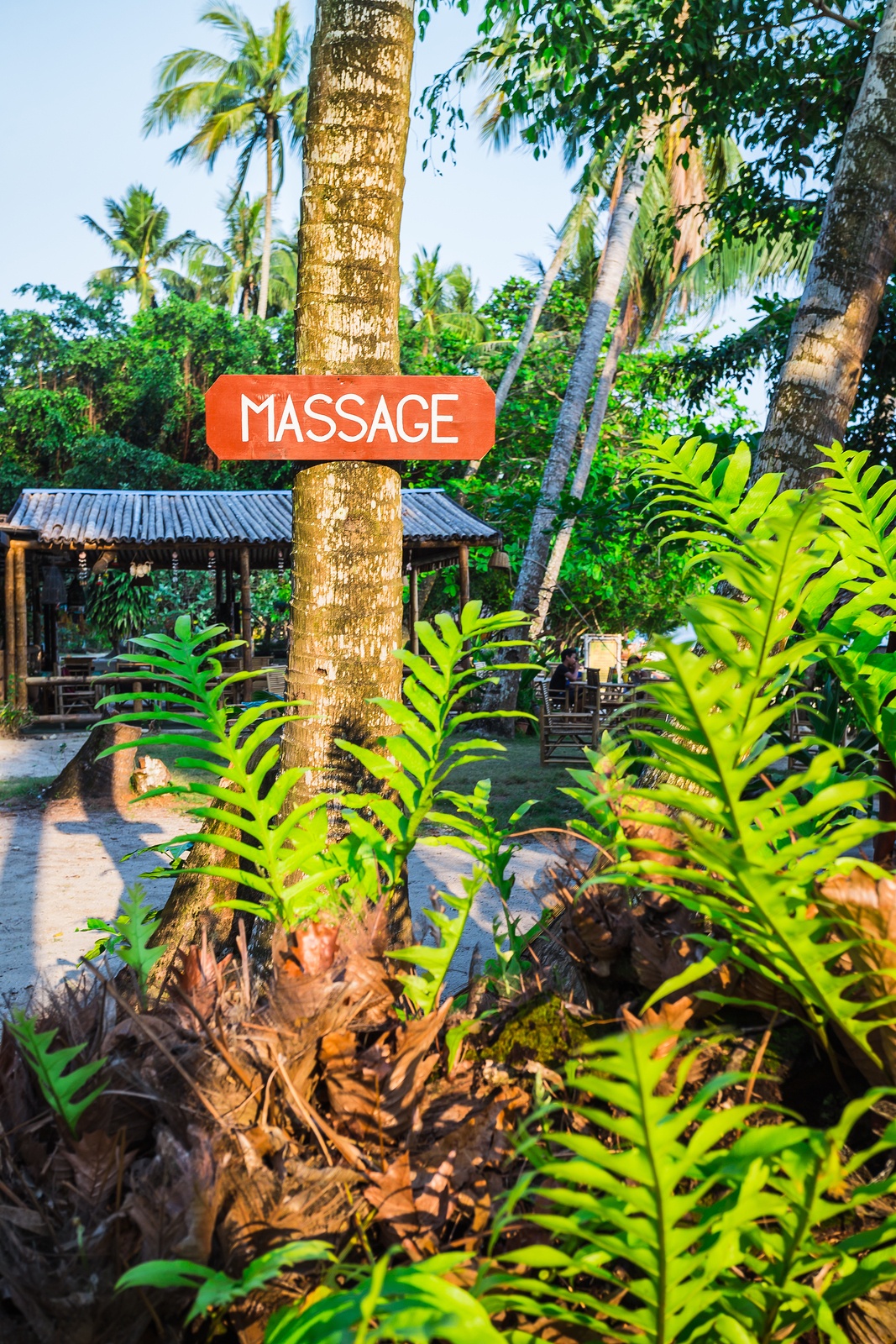 If you’re thinking about career options, you probably have a list of qualities you’d like in a future job, and chances are good that job flexibility is at the top of your list! What’s better than a career that allows you to work in places you’ve always wanted to visit, that lets you choose from among numerous industries? You may not think of massage therapy as a career that involves much travel, but a career in massage not only allows you to work almost anywhere as a licensed therapist, but also qualifies you to work at resorts, on cruise ships, and in other parts of the travel industry to help vacationers enjoy their stay in the world’s most beautiful locations.
If you’re thinking about career options, you probably have a list of qualities you’d like in a future job, and chances are good that job flexibility is at the top of your list! What’s better than a career that allows you to work in places you’ve always wanted to visit, that lets you choose from among numerous industries? You may not think of massage therapy as a career that involves much travel, but a career in massage not only allows you to work almost anywhere as a licensed therapist, but also qualifies you to work at resorts, on cruise ships, and in other parts of the travel industry to help vacationers enjoy their stay in the world’s most beautiful locations.
At Northwest Academy for the Healing Arts, we’re concerned with giving you the practical skills you need to start your own career in massage therapy or to work for a well-accredited business. Through residencies and our special “externships,” you will be able to observe and participate in different practices while earning credit towards their certification. Professionalism, communication, and experience are just as important to us as the theory of massage therapy and bodywork. Upon completion of the program, massage therapy graduates will be licensed to practice their art anywhere in the state of Washington. Students of our program gain real-world experience before they receive their certification and are immediately eligible to put their knowledge and skills to work.
Massage therapy is a skill that you can take to a private practice or use to work for a number of industries such as health, alternative medicine, travel, fitness, corporate services, and hospitality. You’ll have the freedom to choose the type of workplace that you want, to find an environment that you truly enjoy. Qualified massage therapists have found fulfilling careers at luxurious resorts, at airport spas, on the decks of cruise ships in the Pacific, and in specialized athletic facilities.
If you’ve already been practicing massage therapy and wish to gain additional knowledge, skills, and flexibility, we offer advanced training, as well as certified massage instructor programs. Massage Therapists are free to take their career on the road without the need of a physical clinic. If you’re looking for an exciting job that allows you to relate to and help others on a personal basis, and you value flexibility and the ability to travel, to work in multiple locations and industries, and to determine your own practice, massage therapy could be a very rewarding career.
Ask us questions now about massage school or a career in massage therapy.
![]()
Hands on Learning in Massage School: Training the Brain Through Touch
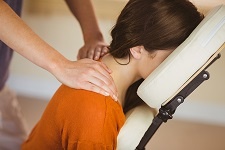 Have you been looking for a career where you can work independently and make a good living – as well as help people feel their best? If the answer is yes, then attending a massage school may lead you to the career you will be proud of.
Have you been looking for a career where you can work independently and make a good living – as well as help people feel their best? If the answer is yes, then attending a massage school may lead you to the career you will be proud of.
Learning styles in massage school
What is your learning style? Do you do best in a classroom setting where the instructor gives lectures? Do you learn best by using charts, videos or other visuals? Or, are you able to retain more information if you are participating in activities that help the information to sink in?
- Lecture
- Visual
- Kinesthetic (hands-on)
Lecture
Do your eyes glaze over and your mind wanders during long lectures? If the answer to that is yes, you aren’t alone. You try to pay attention, but once the lecture is over you realize you haven’t retained what you should have. A large majority of classrooms use the lecture-based type of teaching.
While some lecture in the classroom is necessary, studies have shown that during a lecture, the instructor usually says about 100-200 words a minute. Out of these, the typical student hears only about half. Add a wandering mind to the equation, and comprehension during lectures is an ineffective way to teach – and to learn.
Visual learner
If you learn best by using visual aides, you probably have found methods that help you organize and retain information. There are many great visual learning tools used in massage therapy school. Anatomy charts, muscle maps and models compliment a student that does best with a visual learning style.
Kinesthetic learner
Many people learn best when they are engaged in activities – watching and performing the task that is being taught. Those who prefer the kinesthetic learning style may find it difficult to sit through a lecture, and retain very little of what is shared.
Kinesthetic learners like to get in and do it! If this physical and hands-on style of learning is more like you, you may find massage therapy school right up your alley. Since massage therapy is a hands-on field of study, most students who are interested in massage school are kinesthetic learners. When you attend a massage therapy school, you will experience a lot of hands-on activity – both by learning to do massage, and by receiving massages from your fellow massage therapy school students.
Massage school typically integrates all of the learning styles in ways that will lead you to a successful career in massage therapy.
Click Here: For more information about learning styles used at seattle massage schools
![]()
Choosing Your Massage School – The Importance of Community
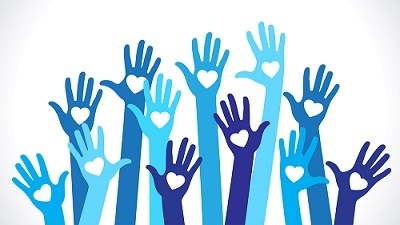 You want to lead a deliberate life. That’s part of what led to your decision to join the massage community which includes therapists, healers, herbalists and acupuncturists. Creating a balance between work, school and extracurricular activities is one part of the exciting journey you’re undertaking when choosing massage school. Choosing massage school means taking time up front to research all certification options. This research is perhaps the most important first step down the rewarding career path.
You want to lead a deliberate life. That’s part of what led to your decision to join the massage community which includes therapists, healers, herbalists and acupuncturists. Creating a balance between work, school and extracurricular activities is one part of the exciting journey you’re undertaking when choosing massage school. Choosing massage school means taking time up front to research all certification options. This research is perhaps the most important first step down the rewarding career path.
Choosing Massage School: Picking the Right Program
One of the first decisions you’ll need to make is what type of practice you would like to establish. Consider the following questions when choosing massage school:
- Is your goal to work with athletes in therapeutic massage or would you like to focus on just providing comfort and relaxation to your clients?
- Would you like to open a solo practice or are you planning on joining a team of providers?
- What technique most interests you? Swedish? Reiki? Deep Tissue?
Look at your options when it comes to choosing massage school. Does the program meet state licensing requirements? Is the school accredited? What type of degree or certification will you receive?
How many hours of training will it take? What are the corresponding costs per credit hour. Can the school assist you with financial aid if you need it?
How large are the classes and do they work with your schedule? Small class size means a higher teacher to student ratio, allowing for individual attention. Are there flexible online classes in addition to on-site training? Does the school have multiple locations, which could allow scheduling flexibility in the future.
Choosing Massage School: Community Matters
Just as important as class size is the internal and external community that supports your studies. Massage school can be intense as the best clinical curriculum includes:
- Anatomy and physiology
- A gross anatomy lab including cadaver dissection
- Pathology
- Kinesiology
- Massage theory and practice
- Business management
- First aid and CPR
This is a medically-based class load that could include up to a year of intensive study. Choosing massage school within a community of like-minded individuals that support your decision to learn these skills is very important. A community focused on holistic healing, organic and natural foods will likely be a positive fit for your study and practice. Having similarly focused healers within your classes will also provide you with the understanding and support you will need to excel in your studies.
When choosing massage school, take time to visit each potential school, paying particular attention to classrooms, class sizes and cleanliness. What is the neighborhood like? Ask if you can sit in and monitor a class to get a feel for the level of professionalism. Do they have alumni that you could speak with to get a sense of the real life job outlook?
Finally, will the school help with externships or job placement as part of the package? Of course the cost is a consideration for most students. But if the school has a high graduation rate and the majority of students pass the massage license testing for your state, coupled with a high rate of job placement, this could easily offset the cost factor of massage school.
Choosing Massage School: Ensuring Your Success
Massage certification will not only positively impact your life, but the also the human beings you’re seeking to help. Taking the time to make a careful decision about choosing massage school will go a long way toward ensuring your success.
Click Here: For more information about our massage school programs
Seattle Massage Schools | Tacoma Massage Schools | Bellingham Massage Schools
![]()
Benefits of Small Class Sizes in Massage School
 Becoming one of the best massage therapists starts with taking massage therapy classes that provides hands on experiences that help you learn and grow. In fact, some of the best classes to join too receive your massage therapy education are ones that are small in size, and here we will discuss why this size is best while in massage school.
Becoming one of the best massage therapists starts with taking massage therapy classes that provides hands on experiences that help you learn and grow. In fact, some of the best classes to join too receive your massage therapy education are ones that are small in size, and here we will discuss why this size is best while in massage school.
Students are able to Excel Faster
Smaller class sizes allow students to have more one on one time with their instructors and more hands on experiences to help them excel faster in their profession of choice. The more experiences you as a student can have when learning a particular trade the better you will become at the profession of choice, which will allow not just some doors of opportunity to open up for you career wise, but many. The better therapist you become the better income you will have when you are out in the world using your expertise to help provide services to others.
Helps Boosts Self-Confidence
Being in a smaller class of students in massage school also forces you to be more involved in projects and helps you develop the proper skills necessary for being the best massage therapist you can be, which in the long run helps you boost your self-confidence. Anytime your self-confidence is being boosted, the more eager you are to want to learn even more and fine-tune your skills.
Allows Students to Strengthen Weak Areas
When learning a new profession such as massage you will run into strengths and weaknesses. The wonderful thing about smaller classes is teachers tend to notice the areas you are struggling in sooner than later. This allows the teacher to help you strengthen your weakened areas through different teaching techniques with one on one time before, during or after massage school hours so you can be the best you need to be in your profession of choice once you graduate from massage school.
Fewer Distractions in the Classroom
Sometimes with larger class sizes, distractions can happen that take away from your learning experiences going on within the classroom. Joining smaller classes allows you to stay focused and learn all that you possible learn from the information being taught in massage school. After all, you are there in massage school to receive the best education possible so you can go out into the world and put your newly developed skills and education to use helping and serving others in need of your expertise.
Bottom Line for Massage School
As you can see the benefits of receiving an education in a smaller classroom of students is outstanding. You want to leave massage school feeling confident and well educated in all areas necessary to be the best massage therapist you can be for healing people through physical touch, which is one of the best alternative medicines out there.
Click Here: To see who has the smallest classe sizes in Seattle and the Northwest.
![]()
Tacoma Massage School Campus Update
Four weeks till the doors open and this massage school becomes a home for many aspiring massage therapist.
Construction is well underway at our newest Tacoma massage school location, an addition to the Northwest Academy family. As you can see below, the lobby demo is complete and new plumbing almost done. We are headed toward drywall repair and painting through the week, with a goal of flooring next week.
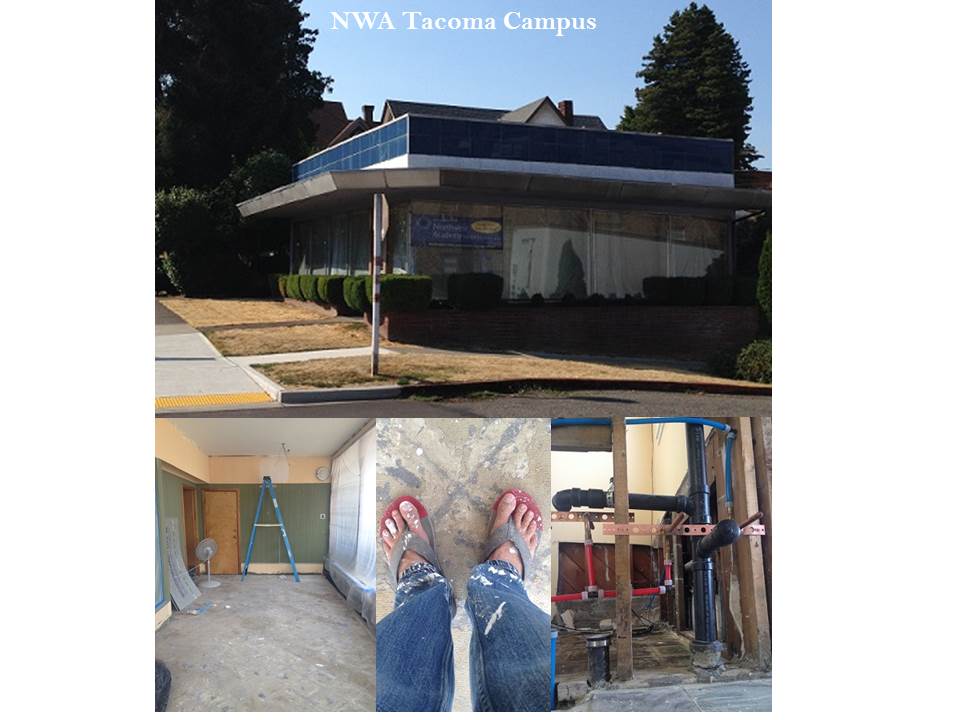
As you might notice, I included a picture of the traditional massage therapist work boot. This footwear is a staple to massage therapist construction workers around the world. 🙂
Well, I suppose I should get back to work as this new school build out won’t do itself. I will update you all again soon as I progress through the project.
Learn more information about our massage school campus locations!
Steps for Passing Your Massage Therapy Board Exam
 The massage board exam (FSMTB MBLEx), is designed to ascertain expertise in massage therapy. It is broken into 8 categories: client assessment and treatment; benefits and affects of techniques; pathologies, contraindications and cautions; history of massage; laws, ethics, boundaries and regulations; professional practice; kinesiology; and anatomy and physiology. It is 125 multiple-choice questions and your will have 2.5 hours to take it. On a scale from 300 to 900, you will need to score a 630 to gain board certification.
The massage board exam (FSMTB MBLEx), is designed to ascertain expertise in massage therapy. It is broken into 8 categories: client assessment and treatment; benefits and affects of techniques; pathologies, contraindications and cautions; history of massage; laws, ethics, boundaries and regulations; professional practice; kinesiology; and anatomy and physiology. It is 125 multiple-choice questions and your will have 2.5 hours to take it. On a scale from 300 to 900, you will need to score a 630 to gain board certification.
In terms of content, you will have already learned everything you need in massage school to pass the exam. This does not, of course, mean that you remember it all, which is where additional preparation comes in. A guide to the content of the exam, including the percentage devoted to each section, is available from the FSMTB here. Use this as a baseline, but tailor your focus to your own predispositions. Areas you feel stronger in will require less study, and vice versa.
Start well in advance – in other words, don’t cram. Cramming is not good test preparation. It increases nervous tension and does not establish the material firmly in your long-term memory. Study for an hour a day for 1-2 months in advance of the exam. Find a calm, quiet space, set a timer, and don’t pressure yourself to go beyond the allotted 60 minutes. Use a study guide (there are several available), and work methodically and thoroughly through the material.
In the last week, do a full review of the all of the categories, concentrating on those you’re least sure of. Eat healthy, balanced meals, exercise moderately and get full-nights of sleep. Foods high in B vitamins will help with concentration.
When it comes to the test itself, read each question carefully, make sure you fully understand it, then answer. If you’re not sure of an answer, leave it blank, move on and return to it when you’ve completed all of the questions you know. For these remaining questions, read for categoricals: ie, “always,” “never,” “everything,” “nothing” – these can rule many choices out. And keep in mind that 2 of the 4 choices can usually be ruled out easily. Of the remaining 2, make the choice that seems most correct.
Following these simple practices and techniques will make the board exam less stressful and lead to better results. Good luck and study hard!






